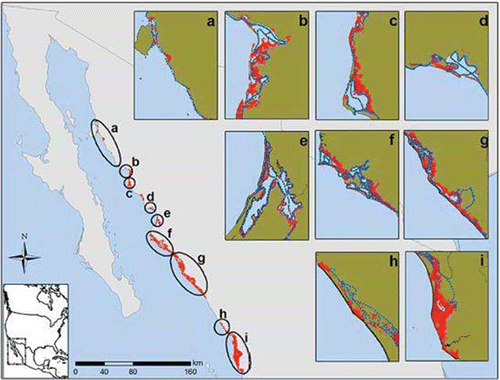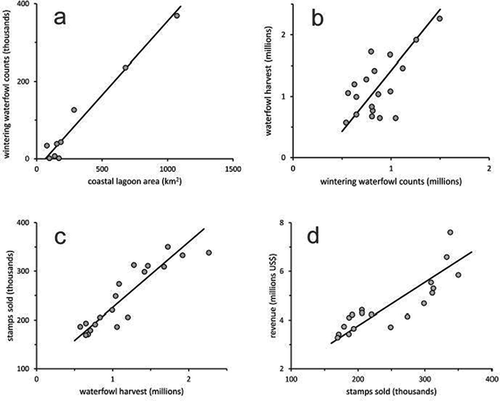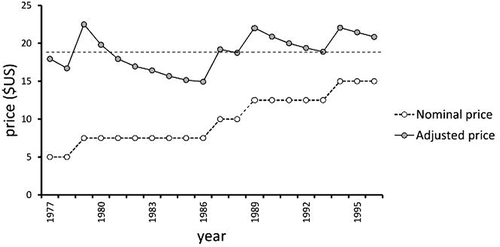Figures & data
Figure 1. Gulf of California coastal lagoons (black circles) included in the Pacific Flyway. Gray color represents mangrove cover and dotted lines represent the aircraft track line where migratory wildfowl were counted (see Methods). Coastal lagoons or lagoon complexes are: (a) Tiburón Island to Guaymas, (b) Guaymas to Estero de Lobos, (c) Estero de Lobos, (d) Bahía de Santa Bárbara, (e) Laguna Agiabampo, (f) Bahía de San Esteban/Topolobampo, (g) Bahía de Santa Maria/Ensenada de Pabellón/El Dorado to Dimas, (h) Laguna Huizache-Caimanero, and (i) Marismas Nacionales/Laguna Cuyutlán (color figure available online).

Table 1 Study site information and estimated average abundance of the five species of waterfowl analyzed in this study
Table 2 Historical abundance and harvest numbers of waterfowl, with the historical sales and prices of duck stamp within the Pacific flyway of North America
Figure 3. Path analysis: The width of the black arrows and the associated numbers indicate the values of the significant path coefficients. The dotted ellipses correspond to the path analysis of lagoon size and mangrove extent as predictors of waterfowl counts. All other ellipses (continuous lines) correspond to the variables analyzed and significant paths identified as predictors of stamp sales. Total revenue was simply calculated as the product of stamp sales × inflation-adjusted stamp prices. White arrows show path points where other, external variables may have an effect.

Figure 2. Correlation between the variables analyzed in this study: (a) Relationship between wintering waterfowl abundance and coastal lagoon area in ten Mexican lagoons (r = .98; n = 9 lagoons); (b) annual waterfowl harvest in the United States plotted against migratory waterfowl abundance in Mexico (r = .65; n = 19 years); (c) hunting stamps sold yearly against previous-year waterfowl harvest in the United States (r = .90; n = 19 years); (d) annual stamp-sale revenue against hunting stamps sold in the United States (r = .86; n = 19 years). All correlations were significant at the P = .01 level.


